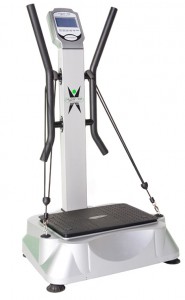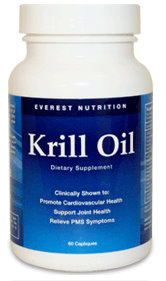Positive vibration, whole body vibration
I have been intrigued by whole body vibration (WBV) for a few years now. If you’ve caught earlier posts, you’ll recall that whole body vibration was developed in India and then passed onto the Greeks to improve overall functioning. More recently, it was used by the Russians to rehabilitate astronauts who may have lost muscle and bone mass during space missions. Now, however, it’s embraced by many sports medicine clinics and fitness facilities and gaining widespread popularity as strategy for improving leg muscle strength (and by default, balance and mobility) among adults as they age.
Positive evidence continues to accumulate in favour of WBV and in fact, researchers have conducted an extensive review of existing studies to assess whether or not WBV training can decrease the risk of falls and fractures. This is important since women as young as 35 years start to lose bone density and strength and by the time they reach the age of 50, they have a 40% risk of suffering a fracture due to osteoporosis during the rest of their lifetime. Moreover, during the first five years after menopause, women can experience as much as a 30% loss of bone density.
A bit of detail….this specific analysis included 15 studies enrolling both men and women between the ages of 64 and 82. Half of them included women only. WBV was conducted between 1 and 5 times per week over a period of 6 weeks to 18 months, and vibration was delivered during the sessions from anywhere to 15 seconds to 3 min for up to 27 times. The techniques were either vertical vibration (in which one stands on the platform and the vibration is delivered upwards), or side-alternating (in which the vibration is delivered side to side; this strategy apparently mimics a see-saw and the natural human gait.
Overall, they found that WBV may help to improve basic balance ability (i.e. sitting and standing balance) and offer significant benefit in terms of overall functional ability, especially in frailer individuals. Less clear, however, is whether or not it is effective in ultimately preventing falls; in this case, one could argue that by improving balance, WBV lowers fall and fracture risk but it isn’t so clear cut. What may actually be the case is that WBV plus an exercise program can help to do both.
So clearly, the verdict is still out on the usefulness of WBV. What’s more? The exact regimen that offers the most benefit remains unknown. Still, it’s clear that some data suggest that as we age, there are strategies other than drugs that might help to keep us walking and balanced.
As always, there is no time like the present to get moving on exercise and bone health awareness. You may be in your mid-30s and believe that nothing is going to change, but the stats are stacked against you without some sort of self-intervention.
Positive vibration? You bet!
Read More
Fish oil. One of these is not like the others…
[Photo credit: Australian Government Department of Sustainability, Environment, Water, Population and Communities. Australian Antarctic Division. ™2004.
Fish oils. Love em or hate em, they’re here to stay. And researchers will continue to research the hell out of these substances — namely omega 3 fatty acids — until they solve the question of ‘do they or don’t they?’ Meanwhile, true confession: as much as I’ve attempted to take fish oil supplements or flaxseed oil per health practitioner recommendations, I’ve always failed horribly. It’s the burp factor. They make me burp and I taste fish all day long. Can’t stand it. Or Stomach it. Or something.
And then I was contacted by the folks over at Everest Nutrition Corporation about its krill oil supplement. And I’ve been reborn.
Let me give you a brief overview of omega-3s and then the lowdown on krill. And why I’ve been converted.
Early last year I wrote a post on research that examined if some of the most commonly used ingredients in supplements may or may boost certain components of mental energy. Here’s an excerpt (although if you’d like to read the post in its entirety, you can find it here):
Omega-3 fatty acids I love fish oils. Researchers continue to study them because their utility is so broad, although the source of omega-3, dosage and ratio of EPA and DHA appear to be important factors in terms of mood (i.e. depression in particular) and mental energy. Overuse of fish oils can also impair the ability of blood to clot and depress overall immune functioning. Still, out of the dietary components that researchers studied, omega-3′s were by far the one most backed by clear data. Most recently, they’ve also been shown to help prevent stroke. In so far as mental energy goes, the researchers note that evidence suggests that fish oils may help delay or reduce cognitive decline in the elderly or improve verbal fluency. Less clear is whether this benefit is stronger if the they are taken earlier in life before cognitive decline. And of course, there is litte agreement on whether or not fish oils supplements convey the same benefits as obtaining the through dietary sources. And, if you choose to obtain your omega-3s through supplementation or pure oil, there is the issue of overfishing of the world’s oceans and how fish oil preparations may contribute to the problem.
So what about fish oil supplements derived from krill?
Krill are small, shrimp-like crustracean that feed on microscopic organisms in the ocean called phytoplankton. Compared to other sources of omega-3s, krill is in less danger of being overfished, one reason why it is so attractive. However, the omega 3s in krill oil attach themselves to fats the form cell membranes (phospholipids), rather than triglycerides, which theoretically makes krill derived omega-3 fatty acids more effective reducing fats in the heart and liver. Another benefit of krill oil is that it contains an antixidant called astaxanthin, which helps protect the body from damage by UV rays, and can help reduce LDL-cholesterol levels while raising HDL-cholesterol levels. Moreover, astaxanthin crosses the blood brain barrier, meaning that it might be of use in protecting eyes, the brain and the central nervous system from circulating free radicals.
However, buyer beware! Not all krill oils are created equal and you want to be certain that what you’re buying meets the highest standards in terms of:
- Meeting content claims about levels of ecosapentaenoic acid (EPA), doxosahexaenoic acid (DHA) and phospholipids
- Meeting claims about how much astaxanthin is delivered per capsule
- If the formulation meets standards for purity, safety and cleanliness per International Krill Oil Standards (IKOS)
- If the product is stable
- If the product meets the standards for contents of heavy metals and mercury
You also need to know that krill oil should not be taken by people with shellfish allergies. Additionally, some people report having gastrointestinal issues, e.g. diarrhea, loose stools when taking krill oil; this is due to the fatty acid that is present in the oil, and may be alleviated by taking a lower dose. Like other forms of fish oil, krill oil may also thin the blood and impair its ability to clot, and in some cases, may interact with thyroid medication. Pregnant women should speak to their doctors before trying krill oil.
Like many other forms of omega-3 fatty acids, krill oil can be expensive. A 30-day supply of Everest Nutrition’s Krill Oil costs roughly $30 a month, which comes out to $1 a day or $.50 a capsule.
So, what do I think? I’m a believer. I have had physicians and other healthcare practitioners recommend that I take fish oil for as long as I can remember. And I haven’t because of the burp factor. I’m grateful to have discovered krill oil. And I highly recommend Everest Nutrition’s formulation, primarily because the manufacturer adheres to the highest of standards.
[Disclaimer: I was not paid to write this review of Everest Nutrition Krill Oil. However, company representatives did provide me with product to try.]
Read More
Plums…delicious, sweet. And, good for bone health?
[Image: all rights reserved 2012. Used with permission by Tartella. Visit them online at http://www.tartella.com/ and if you love this print as much as I do, you can purchase it in their Etsy store.]
Yowza! I am excited about study findings published in the British Journal of Nutrition linking dried plums (better known as the lowly prune) to improved bone mineral density in menopausal women. If these findings ring true and can be duplicated in larger groups of women, they may have a tremendous impact on the steps we take to preserve our bones as we age — most notably, the ability to avoid bisphosphonates — which have been linked to collapse of jaw bones and even an increase in the fractures they are supposed to protect. Moreover, although calcium supplementation is broadly recommended, there is an indication that it may increase heart disease risk in some women.
However, as one of the investigators note in BJN, study findings consistently show that greater intakes of fruits and vegetables have positive effects on bone resorption (the breakdown of bone), adding prunes among fruits and onions among vegetables, to be the most effective functional foods in terms of their actions on modulating the process by which bones break down and build up again.
In animal studies, prunes were shown to prevent bone loss as well as restore bone mineral density in conditions created to mimic bone loss associated with osteoporosis. In addition to these studies, researchers had also a conducted a short, three-month study in menopausal women in whom bone mass was improved simply by eating around 10 prunes (100 g) daily.
In this latest iteration, the same researchers compared two groups of menopausal women assigned to eat around 100 gm of prunes (~10) or 75 gm dried apples (the equivalent of the prunes in terms of energy, carbohydrates, fats and fiber) daily for a year. All of the women had been in menopause for anywhere from one to 10 years, were not on hormone therapy and were also asked to take 500 mg calcium plus 400 IU vitamin D with their daily dried fruit.
The findings? By the end of one year, women eating prunes had significantly lower levels of several markers for bone turnover compared to their peers who ate dried apple. Conversely, the prune eaters had significantly higher levels of bone mineral density in their ulnas (one of two long bones in the forearm) and spine compared to the other group. The researchers say that this is partly due to the fact that prunes suppress the rate at which bone cells break down bone, which exceeds the rate at which they build it up as we age.
Women in particular lose up to 50% of their spongy, or trabecular bone (the network that makes up most of bone structure) and up to 30% of their cortical bone (the outer shell) within the first 10 years of the onset of menopause. Of the investigators, Professor and chair of Florida State University’s Department of Nutrition, Bahram Arjmandi, suggests that women (and men) interested in maintaining or even improving bone health start eating two to three prunes a day and gradually build to six to 10. Arjmandi says to “do something meaningful and practical beforehand, ” and “don’t wait until you get a fracture or are diagnosed with osteoporosis” and need medication.
Sure, prunes get a bad rap. But aren’t ‘bad’ bones even worse? Truly, prunes can be ‘as delicious and sweet’ as plums. The writing on the wall suggests that you don’t wait until it’s too late.
Read More
Whole body vibration training: what’s the lowdown on bone health?
Back in 2009, I wrote a post about the positive effect that whole body vibration training might have on body composition. Now, researchers are suggesting that it may actually affect bone health in a beneficial way. Who would have thunk it?
If you don’t know what I’m referring to, whole body vibration training utilizes a vibration platform for a number of theoretical benefits ranging from weight loss and rehabilitation for muscles to improved balance However, it is also promoted a low-impact alternative to drugs and other therapies to counteract bone loss associated with aging. The concept itself is a bit strange; a person stands, feet shoulder length apart , knees locked and hands to their sides on a vibrating platform producing between.3g’s and 1.1g’s (28Hz-60Hz) of vibration for up to 30 minutes a day (the maximum recommended vibration exposure without adverse effects). That’s it. No cardio, no weight training, no nothing. Just a whole lotta vibration.
So, does it or doesn’t it?
According to a study in the Journal of Osteoporosis, just 20 minutes of intermittent vibration (one minute on, one minuter rest) at low frequency, low magnitude strength (i.e. 12 Hz) resulted in significant and clinically meaningful declines in a primary marker for bone resorption (when bone cells break down bone). In this study, 46 postmenopausal women received vibration once or three times weekly over eight weeks compared to sham vibration (minimal, continuous vibration) once weekly. Of note, a third had already been diagnosed with osteoporosis, osteoporotic fractures or osteopenia, and 41%, with osteoarthritis. In other words, two thirds of these women already had issues with bone health.
The findings?
For the first time, whole body vibration training was shown to benefit bone health. In fact, the primary marker for bone resorption was reduced by 34.6% in women who had vibration therapy three times a week compared to women who had the sham vibration, which researchers say is clinically meaningful. The key was training at least three times week with high frequency, low magnitude vibration whereas training only one day a week only had minimal benefit.
Importantly, this decline is also significant when compared to a 25% reduction in markers of bone resorption in women with osteoporosis/oteopenia who take medication and regularly walk.
Information is still needed on factors like the duration of vibration training, if more or less would suffice and if benefits can actually be maintained over time. It’s also unclear if gender, nutritional or hormone status or use of medications affects the value of vibration training. Still, the results are pretty encouraging.
Positive vibrations? Yeah, you bet!
Read More
Use it or lose it – more on osteoporosis
Bone health and osteoporosis. Yes, I know I keep writing about it. The reason is simple: you ARE at risk of losing your bone density and strength, especially if you are a woman over the age of 35. And if you are 50 or older? You have as much as a 40% risk of suffering a fracture due to osteoporosis during the rest of your lifetime. Moreover, during the first five years after menopause, women can experience as much as a 30% loss of bone density.
I can’t emphasize it enough. The risk is there. It is inevitable. However, you can reduce your risk a little bit by incorporating the following message into your life:
Use it. Or lose it.
In other words, you need to move.
The latest news out of the esteemed Cochrane Collaboration (an international organization that extensively reviews medical research) is that exercise specifically designed to promote bone growth and preserve existing bone mass, namely the type that places mechanical stress on the body, is necessary. The newly-published review of 43, scientifically sound (i.e. randomized, controlled studies) is an update of a review that appeared in 2000. Of the 4,320 postmenopausal women included in the reviewed trials:
- Those who engaged in any form of exercise had slightly less (0.85%) bone loss than women who did not.
- Those who performed combinations of exercise types, i.e. walking, jogging, dancing, progressive resistance training, vibration platform had, on average, as much as 3.2% less bone loss than those who did not exercise.
- Non-weight bearing exercise, such as progressive resistance strength training targeting the lower limbs, was shown to slightly preserve bone mineral density at the hip, while the combination of exercise, per above, was most beneficial for slightly preserving bone mineral density at the spine. (Did you know that spine and hip fractures are the most common among women with osteoporosis?)
The conclusions are pretty clear: long periods of inactivity lead to reduced bone mass.However, here is a simple way to mitigate some of this loss, albeit slightly, and even help reduce the costly effects of osteoporosis: Exercise.
The best exercises? Those that stress or mechanically load the bones, meaning the type that make the bones support body weight or resist movement, such as aerobic or strength training, walking, or Tai Chi.
Ultimately, your goal is prevent osteoporosis from occurring in the first place. While some amount of bone loss is part and parcel with aging, resistance training is critical.
Move it or lose it.
Read More









